Eukaryotic cells
1/39
There's no tags or description
Looks like no tags are added yet.
Name | Mastery | Learn | Test | Matching | Spaced |
|---|
No study sessions yet.
40 Terms
What is the function of the cell surface (plasma) membrane?
It controls exchange of materials between the internal cell environment and the external environment.
Why is the cell surface membrane described as ‘partially permeable’
It allows some molecules to pass through while restricting others.
What is the basic structure of the cell surface membrane?
A phospholipid bilayer around 10 nm thick.
How does the cell wall differ from the plasma membrane?
The cell wall is freely permeable to most substances, whereas the plasma membrane is selectively permeable.
Structure and function of the cell wall
Gives plant support and structure, made up of the polysacharide cellulose and can function as a carbohydrate store
What are plasmodesmata?
pores within the cell walls that connect two cells together by their cytoplasm enabling the exchange and transport of substances
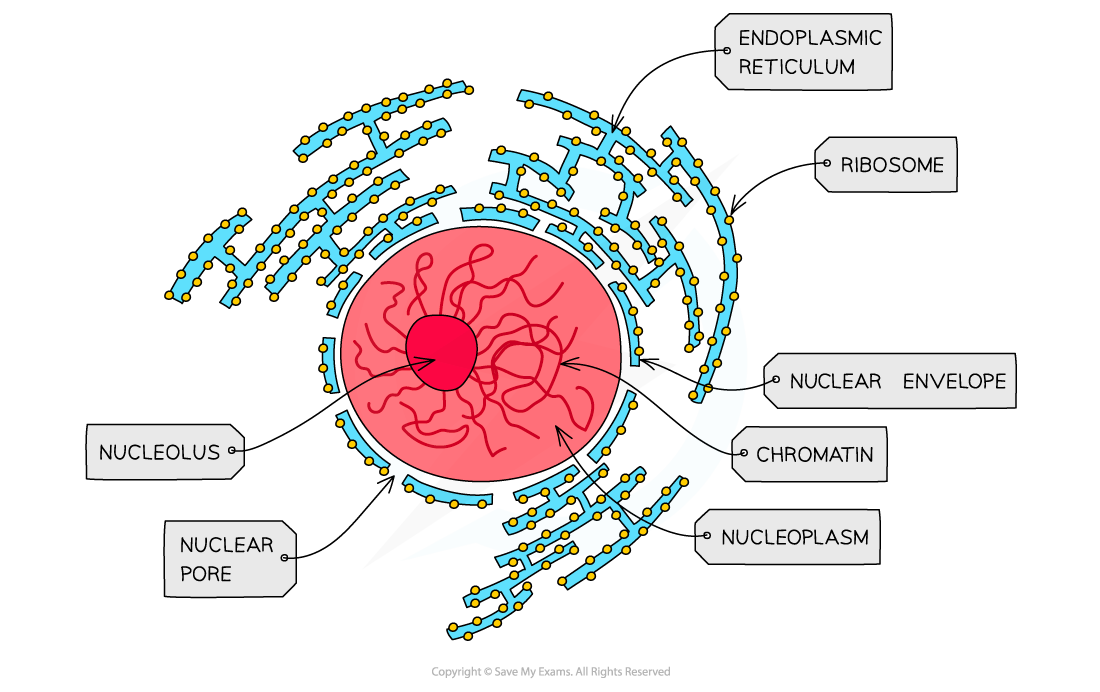
What surrounds the nucleus and separates it from the cytoplasm?
The nuclear envelope, a double membrane with pores.
what happens when the nucleus is stained?
shows darkened patches known as chromatin
What is the function of nuclear pores?
Allow mRNA and ribosomes to exit; allow enzymes (e.g. DNA polymerase) and signalling molecules to enter.
What is chromatin?
The material chromosomes are made from — linear DNA wound around histone proteins ( histone proteins keep the DNA in its coiled shape)
What are nucleoli/nucleolus?
Darkly stained regions in the nucleus, the sites of ribosome production which move out of the nucleus to latch onto the rough endoplasmic reticulum
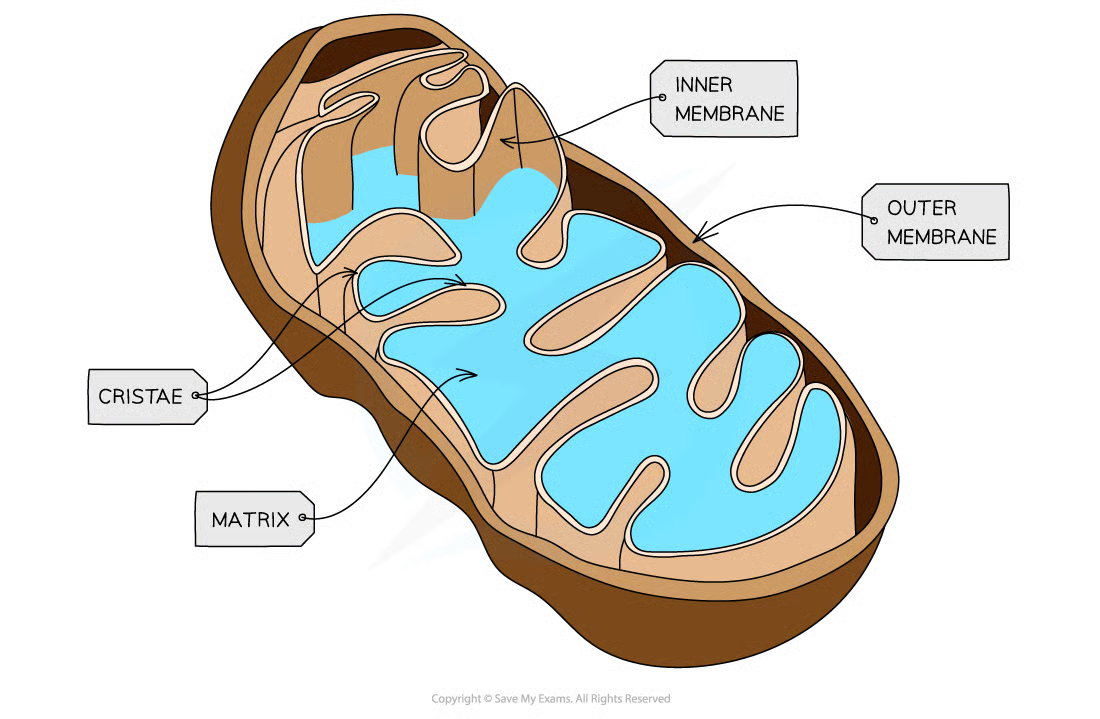
What is the role of mitochondria?
Site of aerobic respiration and ATP production in eukaryotic cells.
What is the structure of mitochondria?
Double membrane with an inner membrane folded into cristae; the central part inside is the matrix which is a gel like fluid
What is found in the mitochondrial matrix?
Enzymes for aerobic respiration, small circular DNA, and ribosomes (for replication and protein synthesis).
Where are chloroplasts found and what do they contain?
Found in green parts of plants, containing chlorophyll (photosynthetic pigment).
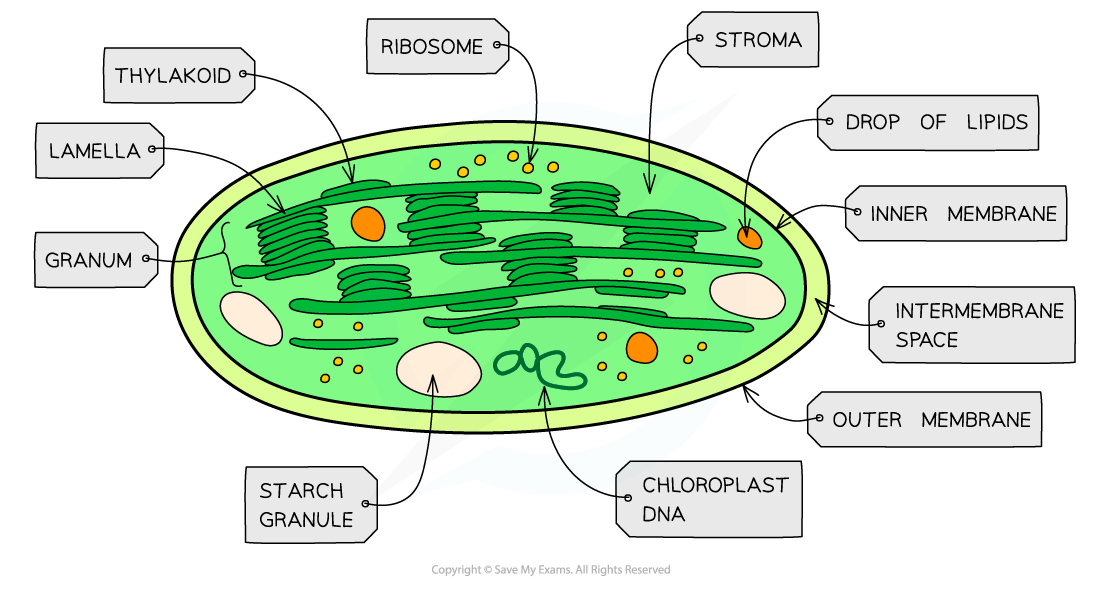
What is the structure of chloroplasts?
Double membrane ,contains stacks of thylakoids called grana and filled with liquid called stroma.
Where are ribosomes made and what are they composed of?
Made in the nucleolus; composed of rRNA and proteins. Either floats free in the cytoplasm or attached to rough ER
Where are ribosomes found?
Freely in the cytoplasm or attached to the RER in eukaryotes.
What are the types of ribosomes in cells?
80S (60S + 40S subunits) in eukaryotes; 70S (50S + 30S subunits) in prokaryotes, mitochondria, and chloroplasts.
What is the function of ribosomes?
The site of translation (protein synthesis).
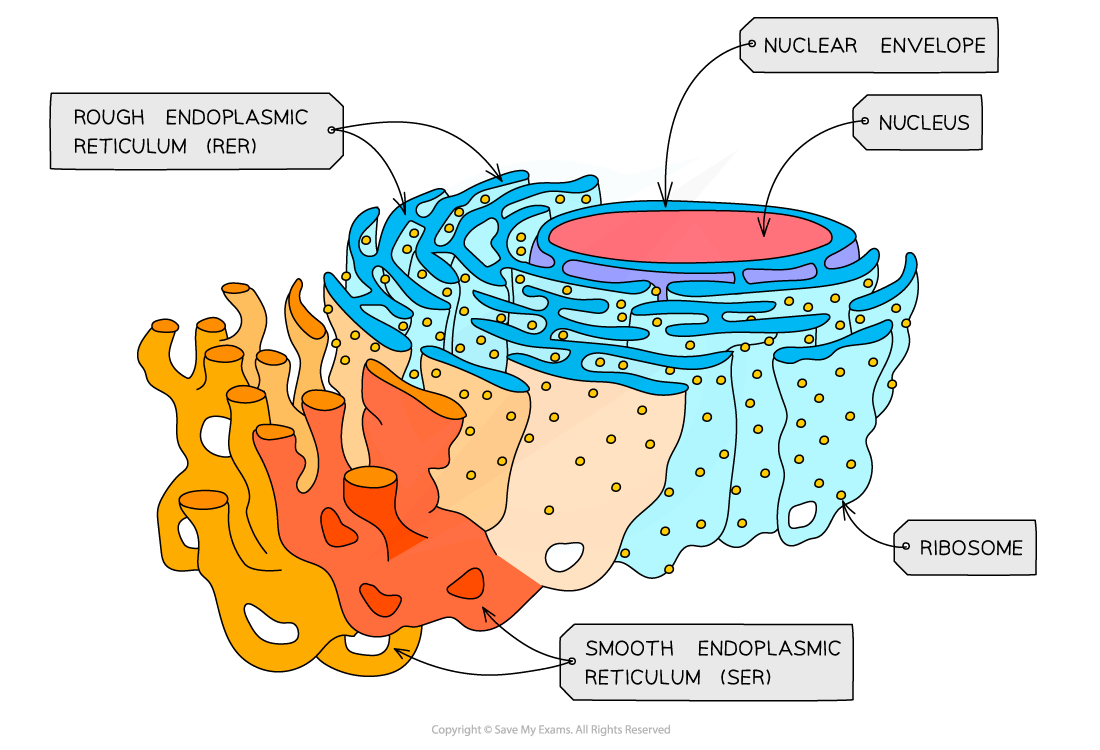
What is the difference between rough ER (RER) and smooth ER (SER)?
RER has ribosomes on its surface and processes proteins; SER has no ribosomes and synthesises/stores lipids, carbohydrates, and steroids.
How is the RER connected to the nucleus?
The RER membranes are continuous with the nuclear envelope.
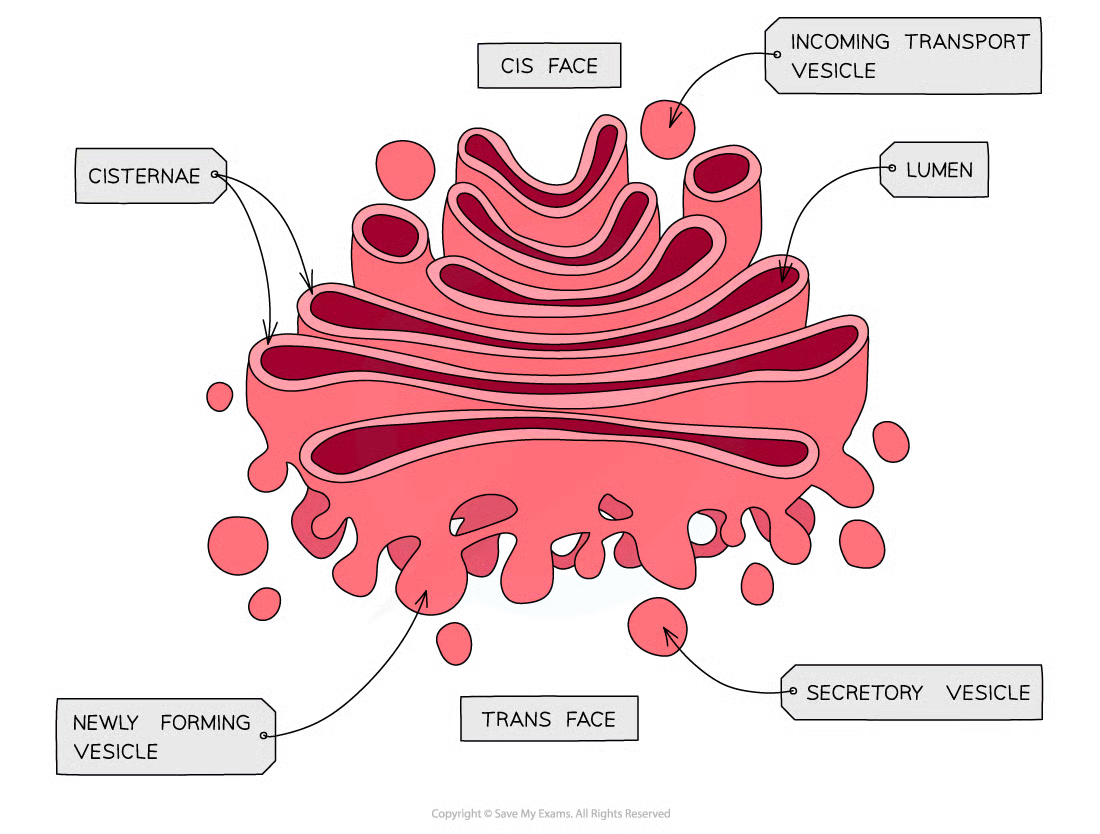
What is the structure of the Golgi apparatus?
A group of fluid filled membrane bound flattened sacs, vesicles are often seen at the edges of sacs. Vesicles are often seen at the edges of sacs
What is the function of the Golgi apparatus?
Modifies proteins and lipids, then packages them into vesicles for transport.
what is a vesicle
a small fluid filled sac in the cytoplasm surrounded by a membrane, transports substances in and out of the cell some are formed by the golgi apparatus or the ER while others are formed at the cell surface
What are possible destinations for proteins processed in the Golgi?
Exported from the cell (e.g. hormones), packaged into lysosomes (enzymes), or delivered to organelles.
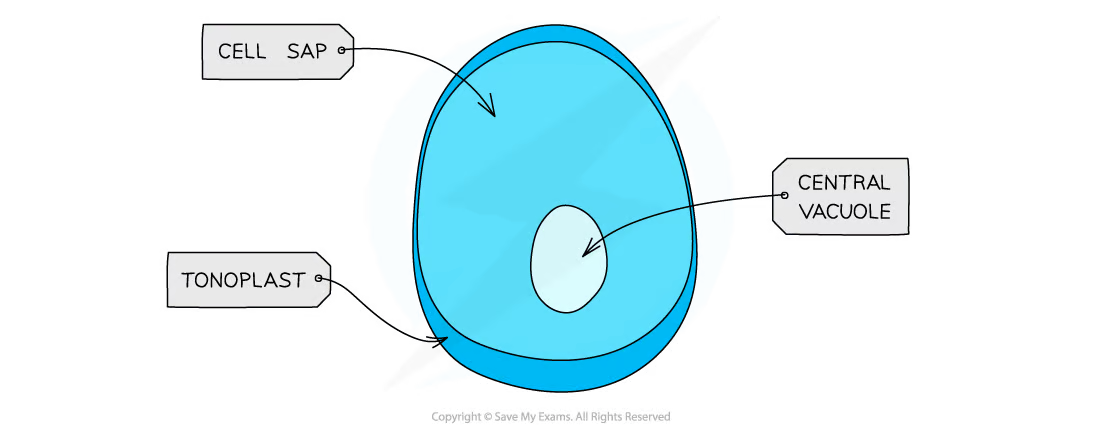
What is the structure and function of the vacuole in plant cells?
Large sac surrounded by a selectively permeable tonoplast filled with cell sap; provides storage and support. Important in keeping cell rigid when the vacuole is full of sap ( watery solution of enzymes, sugars etc.) the cell is said to be turgid
How do vacuoles differ in animal cells?
Small and temporary, not permanent structures.
What is the function of vesicles?
Membrane-bound sacs for transport and storage.
What are lysosomes?
Specialised vesicles containing hydrolytic enzymes to break down waste, worn-out organelles, and pathogens; also used in apoptosis ( end of cell life digestion)
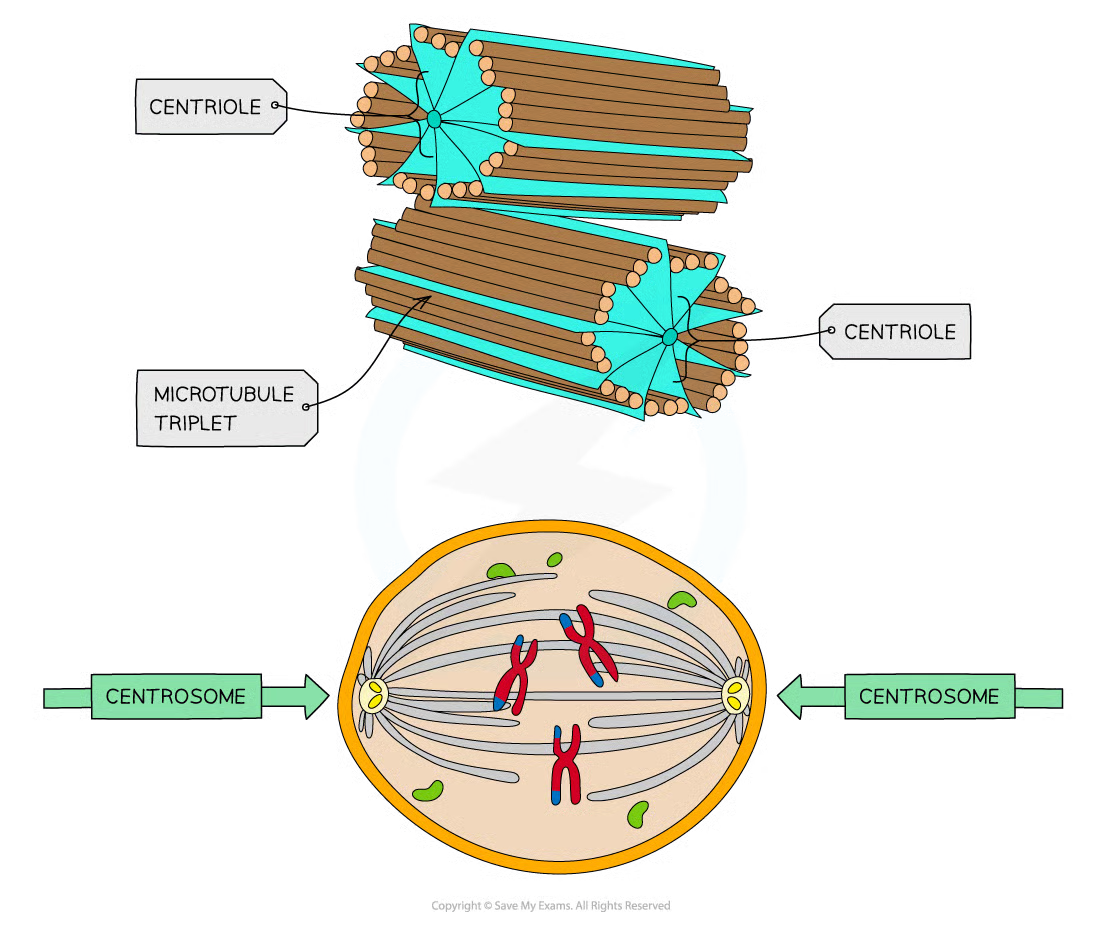
What are centrioles and centrosomes?
Centrioles = hollow microtubule fibres; two at right angles form a centrosome, which organises spindle fibres during cell division.
Which organisms lack centrioles?
Flowering plants and fungi.
What are microvilli and what is their function?
Cell membrane projections in animal cells that increase surface area for exchange of substances.
What are cilia and what is their function?
Hair-like projections made from microtubules; move substances across the cell surface.
What are flagella and what is their function?
Essential for locomotion of individual organisms. Longer structures made of microtubules; contract to move the cell (e.g. sperm cells).
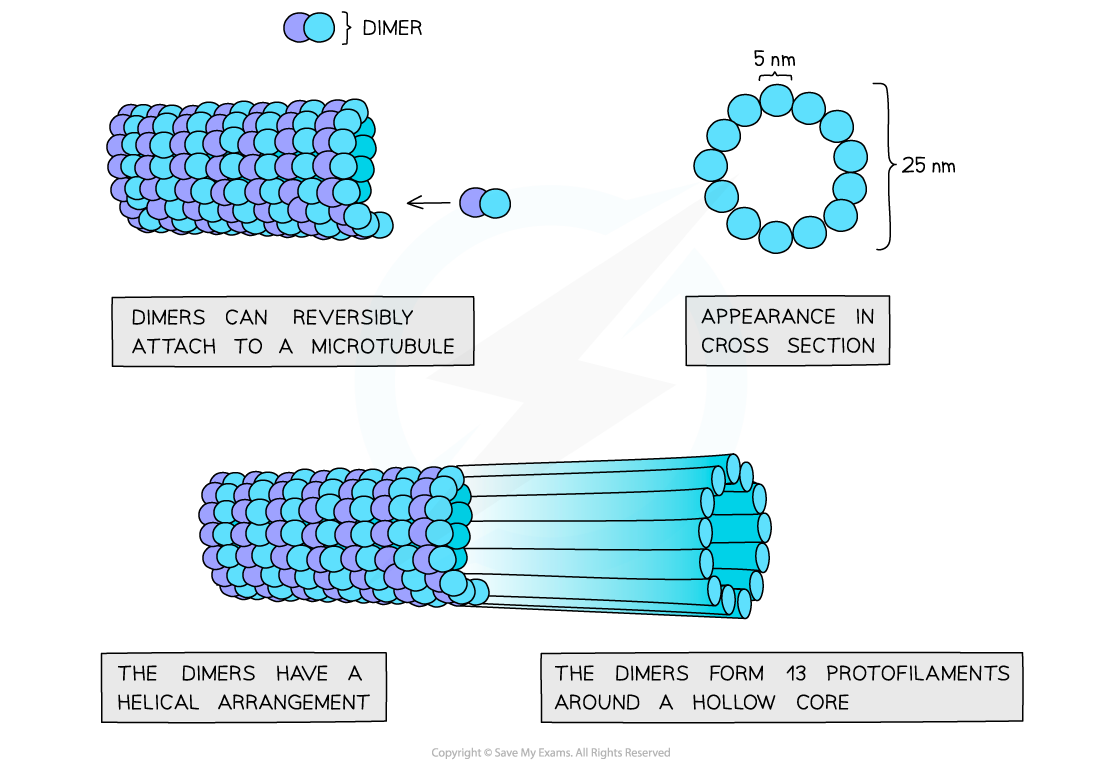
microtubules strucuture and function
Found in all eukaryotic cells
Makes up the cytoskeleton of the cell about 25 nm in diameter
Made of α and β tubulin protein combined to form long rigid hollow tubes
form the spindle fibres in cell division
form structures like cilia and flagella
forms tracks for organelles to move across
maintains overall cell shape by resisting cell compression
9+ 2 arrangement ( two microtubules in the centre and nine around the edge)
microfilaments structure and function
Made of actin (protein).
Very thin and flexible.
Functions:
Give mechanical strength.
Important in cell movement and shape changes (e.g. muscle contraction).
Cytokinesis (splitting of cytoplasm during cell division).
what do intermediate filaments do
- Provide mechanical strength to cells
- Anchor the nucleus in place
- Help maintain cell integrity and shape especially under stress
what are the four majn functions of the cytoskeleton
the microtubules and microfilaments support /anchor the cell’s organelles, keeping them in position
help to strengthen the cell and maintain its shape by providing mechanical strength forming a kind of scaffolding that helps to maintain the shape of the cell
intracellular movement - by forming tracks along the cell in which organelles can move eg. movement of vesicles and spindle fibres moving to poles of the cell
Cellular movement - the proteins of the cytoskeleton can also cause the cell to move eg. cilia and flagella
what do the different parts within the ultrastructure of the chloroplasts do
Structure | Description | Function |
|---|---|---|
Double membrane (envelope) | Inner and outer membrane | Controls entry and exit of substances |
Thylakoids | Flattened membrane sacs arranged in stacks called grana | Site of light-dependent reactions, contains chlorophyll |
Grana (singular: granum) | Stacks of thylakoids | Provide large surface area for light absorption |
Chlorophyll | Green pigment embedded in thylakoid membranes | Absorbs light energy for photosynthesis |
Stroma | Fluid-filled matrix surrounding grana | Site of light-independent reactions (Calvin cycle) |
DNA and ribosomes (70S) | Circular DNA and small ribosomes | Allows chloroplasts to produce some of their own proteins (supports endosymbiosis theory) |
Starch grains | Stored product of photosynthesis | Energy store |
Lipid droplets | Energy storage | |
Lamellae (intergranal) | Membranes connecting grana | Maintain grana spacing and distribute products |